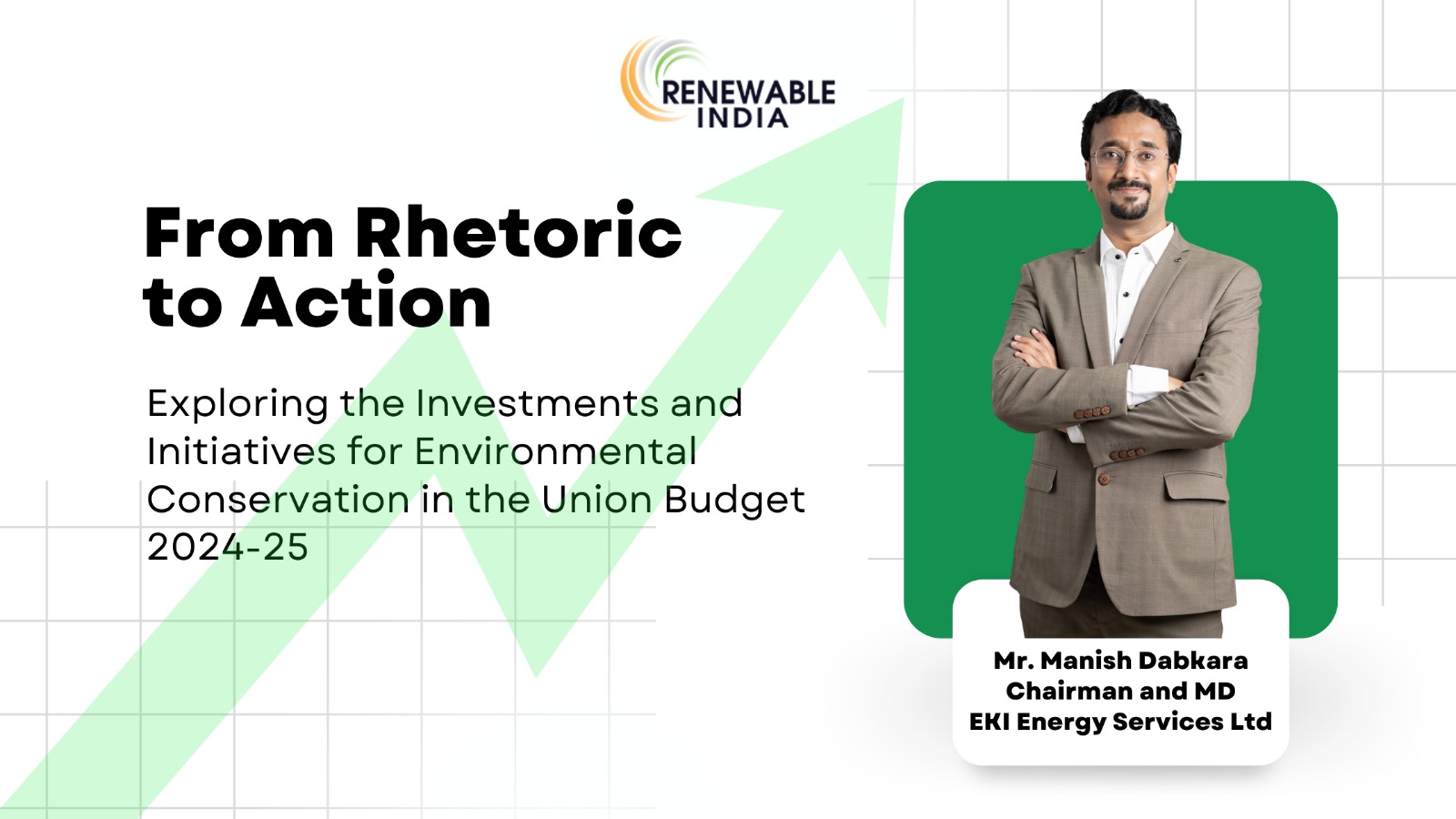
As we confront escalating environmental challenges and the pressing imperative for sustainable practices, the Indian government’s 2024-25 Union Budget comes at a pivotal time, crafted to address these critical issues. Marking a stride towards environmental sustainability, this budget proposes a series of innovative measures aimed at green energy adoption, enhancing climate resilience, and fostering the growth of the bio-economy. For those deeply embedded in the environmental services sector, the budget presents a commendable strategic framework that aligns with our commitment to promoting a greener, cleaner future.
Finance Minister Nirmala Sitharaman, during her budget speech, also mentioned the challenge of climate change that India had to address during its G20 presidency. The budget reflects a comprehensive strategy to tackle this challenge head-on, leveraging India’s leadership to spearhead international collaboration and innovation. By prioritizing climate change in the budget, the government showcases its commitment to leading by example.
The government’s ambitious plans for rooftop solarization, with a target to equip 1 crore (10 million) houses to obtain 300 units of green electricity every month, without any cost to the marginal consumers, marks a significant step towards democratizing clean energy access and a step towards ‘Aatmanirbhar Bharat’ in terms of energy independence. This initiative not only promises to reduce the carbon footprint but also ensures substantial savings for households, estimated between ₹15,000 to ₹18,000 annually. Carbon credits generated from this step will prove to be a milestone in India’s journey towards net zero by 2070.
Such measures, coupled with the government’s support for the expansion of the electric vehicle (EV) ecosystem and offshore wind energy potential, align perfectly with our goals to promote renewable energy solutions.
Our enthusiasm particularly peaks around the budget’s focus on fostering a bio-economy, resonating with our strategic direction towards bio-related ventures. The introduction of schemes for bio-manufacturing and bio-foundries is a game-changer. By promoting the development of biodegradable polymers, bio-plastics, bio-pharmaceuticals, and bio-agri inputs, the government is advocating for green growth while pioneering a shift towards a regenerative economic model.
This initiative is poised to revolutionize consumptive manufacturing, transitioning to practices that replenish the environment rather than deplete it.
The commitment of a ₹1 lakh crore corpus for interest-free long-term [upto 50 years] financing towards research and development in sunrise sectors further exemplifies the government’s foresight in nurturing innovation in green technologies. This move is expected to catalyze significant advancements in bio-manufacturing, positioning India as a global leader in the bio-economy sector.
In her speech FM Sitharaman also spoke of coal gasification and liquefaction, with a target capacity of 100 million tonnes by 2030, signals a strategic pivot towards cleaner fuel alternatives. This initiative is aimed at reducing India’s dependency on imported natural gas, methanol, and ammonia, highlighting a clear path towards energy self-sufficiency and sustainability. The phased mandatory blending of compressed biogas in CNG for transport and domestic use underlines a holistic approach to reducing the carbon footprint across various sectors.
The allocation for the blue economy, focusing on restoration, adaptation measures, and the promotion of coastal aquaculture and mariculture, reflects a deep understanding of the interconnectedness of terrestrial and marine ecosystems. This scheme promises not only to enhance the livelihoods of coastal communities but also to protect and regenerate marine biodiversity.
The introduction of viability gap funding for offshore wind energy, targeting an initial capacity of 1 GW, is a commendable step towards harnessing India’s vast shore wind energy potential. This initiative is expected to accelerate the country’s journey towards achieving its ambitious net-zero targets, showcasing a proactive approach in embracing cutting-edge renewable energy technologies.
As we stand at the cusp of a green revolution, it is imperative for corporate and government sectors to collaborate closely. Professional environmental services, combined with the government’s forward-looking policies, creates a unique opportunity for impactful partnerships. We must join hands in leveraging these initiatives, driving innovation, and leading the transition towards a sustainable economy.
The Union Budget of 2024-25 is not just a financial statement; it’s a manifesto for environmental and economic transformation. As we dig into ventures around bio-economy, we see a horizon filled with opportunities for growth, innovation, and sustainability. Together, we can turn these opportunities into realities, fostering a greener planet for future generations.
As we navigate the challenges and opportunities of the 21st century, partnerships between the government and private sector will be pivotal in shaping a sustainable, prosperous, and resilient future for India and the world.
Budget 2024: India’s Green Hydrogen Revolution Takes Center Stage
Leave a Reply